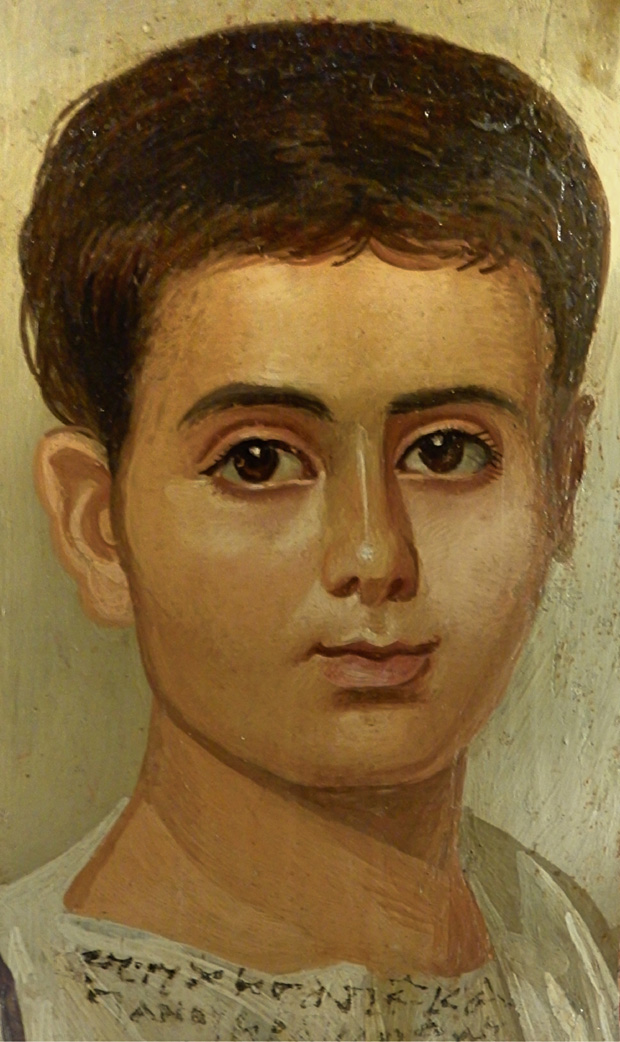
The practice started to spread to the wider population during the Middle Kingdom. Old Traditions, New ExpressionsĮlaborate mummification rituals for elite burials appeared very early in Egypt’s history, during the Old Kingdom, which ended around 2130 B.C. Recent scholarship suggests the portraits were created to keep the essence of the deceased intact and encapsulate the moment of a person’s transition from life through death and on to the realm of Osiris. DEA/ALBUMĪlthough cremation and burial were common in the wider Greco-Roman world, many recent arrivals in Al Fayyum adopted Egyptian mummification rituals. While some masks made an attempt to individualize the deceased’s features, the constraints of cartonnage favored more generic representation. A crown would often be placed on the head-in this case, a floral wreath, a typically Roman touch. This mask features Egyptian gods and religious scenes that will serve to protect the deceased during the journey to the underworld.

In the Greco-Roman period some masks followed the older, more traditional Egyptian-style designs, typically incorporating a wig and protective necklace known as an usej. Like the masks that had covered the faces of Egyptian mummies for many centuries before, this one is made of cartonnage, a technique in which linen is stiffened with plaster, sculpted into the form of the deceased’s torso and head, and painted. A seated figure of Anubis, god of mummification and protector of the deceased, appears on either side of the face at chin level. A protective winged divinity appears on either side of the face to guard the deceased in the afterlife. Placed over a distinctly Egyptian headdress, the floral wreath reveals a Roman influence. This Roman-era mask shown on this page was found in the Al Fayyum area. Many of the Greeks, or Hellenes, had come with Alexander during his conquest. Irrigation systems of canals were built, and it turned into one of Egypt’s most productive agricultural regions producing abundant crops of fruits, vegetables, and vines.Īs the region grew prosperous, people from many backgrounds were drawn to the oasis, leading to a multicultural population of Egyptians, Greeks, and Romans. They were drawn to the fertile land around Al Fayyum. Known as Shedet during pharaonic times, the city, the nearby oasis, and the surrounding area were transformed when Alexander the Great conquered Egypt in 332 B.C., incorporating Egypt into an empire that would grow to encompass what is now Greece, Turkey, the Palestinian territories, Israel, Syria, Iran, Iraq, and much of Central and South Asia.Īlexander’s successors, the Ptolemy kings, would rule Egypt for nearly three centuries. The modern-day city of Al Fayyum is located about 60 miles southwest of Cairo, between the Western Desert and the Nile. The artistic style seen in the mummy portraits reflected this cultural intermingling and may have influenced later Christian art. Petrie was, nevertheless, the first archaeologist to submit these portraits to academic study, beginning the task of piecing together a unique world in which Egyptian, Greek, and Roman styles and customs began to intertwine from the first century B.C. We have to imagine ancient sculpture from around 350 BC onwards as being painted in as sophisticated a manner as this mummy portrait.Please be respectful of copyright. Beneath the fine curls on her forehead lies a delicate shadow, a highlight accentuates the ridge of the nose, and the shadow cast by the nose is brought out by hatching.Īccording to the Roman writer Pliny, the leading panel painters were also commissioned to apply polychromy to marble sculptures. Areas of light and dark (chiaroscuro) lend depth and threedimensionality to the girl’s face.

They were executed in the tradition of the Greek artists’ workshops and testify to the efflorescence of ancient painting. It is therefore all the more significant that mummy portraits survived in the hot, dry climate of Egypt. Because of the perishable nature of the material, however, the masterpieces of the admired painters of antiquity have been lost. We learn from ancient writers that the art of painting on wooden panels had been brought to perfection as early as 350 BC. She looks sideways and into the distance, not directly at the viewer.

This lively portrait of a young Roman girl, whose beautiful hair is adorned with a wreath of leaves, is painted on a panel of sycamore wood. However, a new element was introduced: a very faithful portrait of the deceased, painted on a wooden panel, was sometimes enclosed with the mummified body. The dead continued to be embalmed and laid to rest in the form of mummies. Even during the period of Greek and Roman rule in Egypt, the old burial customs from the days of the Pharaohs were not abandoned.


 0 kommentar(er)
0 kommentar(er)
